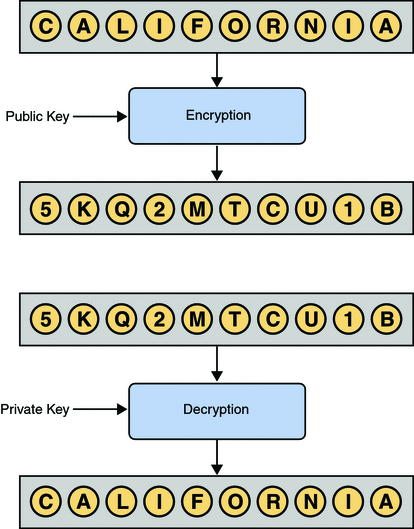Generate A Keypair Using Crt And Key
Jun 19, 2015 Create a.pfx/.p12 Certificate File Using OpenSSL. Panos Pantousas June 19, 2015.inkey privateKey.key – use the private key file privateKey.key as the private key to combine with the certificate.-in certificate.crt – use certificate.crt as the certificate the private key will be combined with. Crt and key files represent both parts of a certificate, key being the private key to the certificate and crt being the signed certificate. It's only one of the ways to generate certs, another way would be having both inside a pem file or another in a p12 container.
- Generate A Key Pair Using Crt And Key Card
- Generate A Key Pair Using Crt And Key Free
- Generate A Key Pair Using Crt And Key West
- Generate A Key Pair Using Crt And Key Free
 -->
-->To sign an assembly with a strong name, you must have a public/private key pair. This public and private cryptographic key pair is used during compilation to create a strong-named assembly. You can create a key pair using the Strong Name tool (Sn.exe). Key pair files usually have an .snk extension.
Note
In Visual Studio, the C# and Visual Basic project property pages include a Signing tab that enables you to select existing key files or to generate new key files without using Sn.exe. In Visual C++, you can specify the location of an existing key file in the Advanced property page in the Linker section of the Configuration Properties section of the Property Pages window. The use of the AssemblyKeyFileAttribute attribute to identify key file pairs was made obsolete beginning with Visual Studio 2005.
Create a key pair
To create a key pair, at a command prompt, type the following command:
sn –k <file name>
In this command, file name is the name of the output file containing the key pair.
The following example creates a key pair called sgKey.snk.
If you intend to delay sign an assembly and you control the whole key pair (which is unlikely outside test scenarios), you can use the following commands to generate a key pair and then extract the public key from it into a separate file. First, create the key pair:
Next, extract the public key from the key pair and copy it to a separate file:
Once you create the key pair, you must put the file where the strong name signing tools can find it.
When signing an assembly with a strong name, the Assembly Linker (Al.exe) looks for the key file relative to the current directory and to the output directory. When using command-line compilers, you can simply copy the key to the current directory containing your code modules.
 Compatible AES algorithm for Java and Javascript. In a above post they are using 128 bit key value. I want to use my own key instead of hard coding the 128 bit key value. My question is that can I convert any random string into 128 bit key value. Please post some examples if it is possible to convert any string into 128 bit value.
Compatible AES algorithm for Java and Javascript. In a above post they are using 128 bit key value. I want to use my own key instead of hard coding the 128 bit key value. My question is that can I convert any random string into 128 bit key value. Please post some examples if it is possible to convert any string into 128 bit value.
If you are using an earlier version of Visual Studio that does not have a Signing tab in the project properties, the recommended key file location is the project directory with the file attribute specified as follows:
Generate A Key Pair Using Crt And Key Card
See also
Here are the few steps to generate the private key, certificate signed request, self-signed certificate and how to get rid of the passphrase request when starting you’re application .
Okay, let’s start. Go to the directory you want to store you’re certificate stuff. This example will assume you’re common name (aka : host name) will be “secure.certificate.tld”.
The whole process explained down below is a step-by-step procedure for every stage. There is a single command that can do it all (generate the private key without passphrase and the CSR). You can use the following single step command if this is what you need and you should be good to go requesting the certificate from the Certificate Authority (or your SSL vendor) or jump to the self-generated certificate step further below otherwise.
Generate a private key without passphrase + CSR :

cp-psecure.certificate.tld.keysecure.certificate.tld.key.bak |
Then, remove the passphrase :